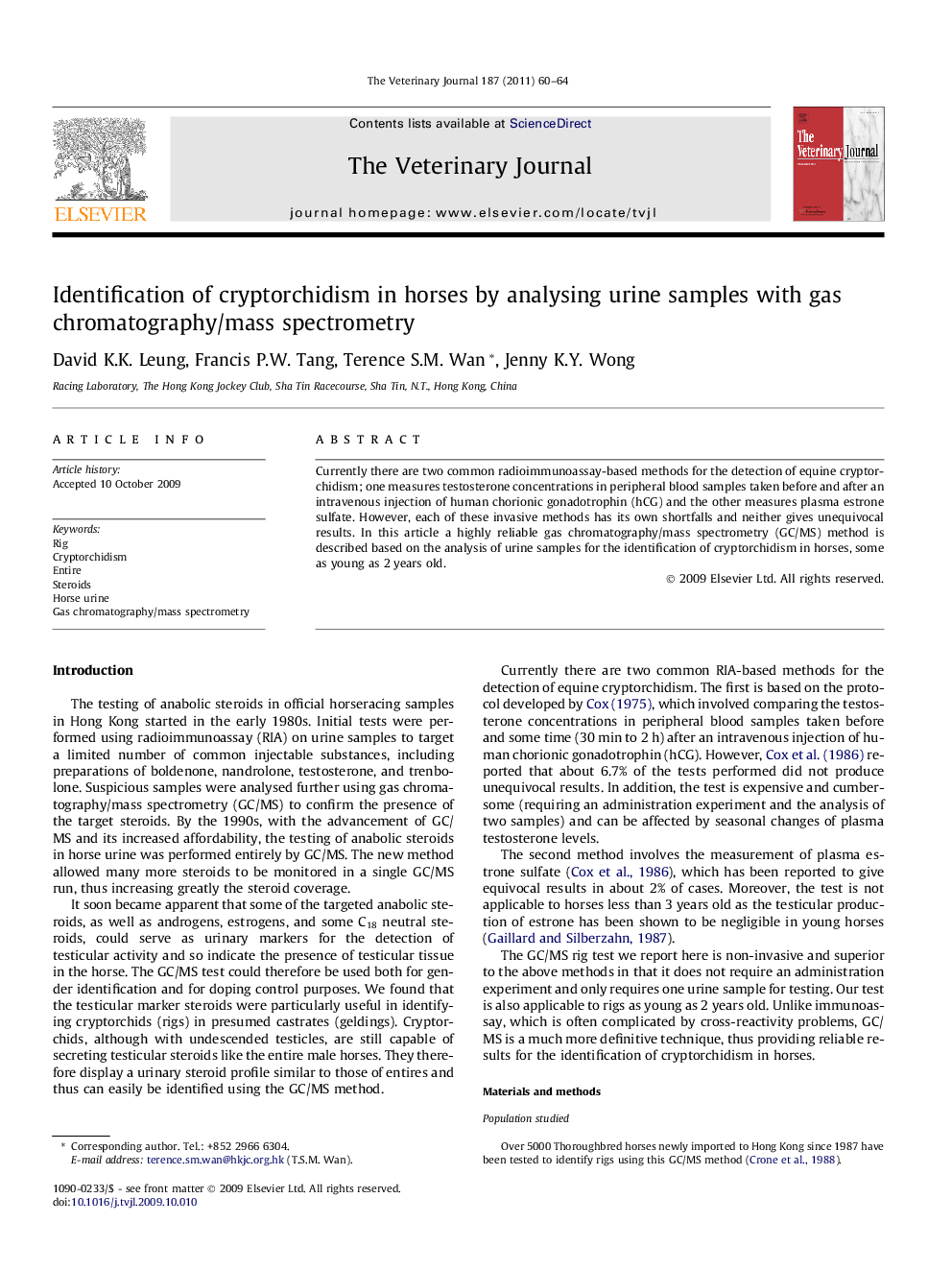| Article ID | Journal | Published Year | Pages | File Type |
|---|---|---|---|---|
| 2464951 | The Veterinary Journal | 2011 | 5 Pages |
Abstract
Currently there are two common radioimmunoassay-based methods for the detection of equine cryptorchidism; one measures testosterone concentrations in peripheral blood samples taken before and after an intravenous injection of human chorionic gonadotrophin (hCG) and the other measures plasma estrone sulfate. However, each of these invasive methods has its own shortfalls and neither gives unequivocal results. In this article a highly reliable gas chromatography/mass spectrometry (GC/MS) method is described based on the analysis of urine samples for the identification of cryptorchidism in horses, some as young as 2 years old.
Related Topics
Life Sciences
Agricultural and Biological Sciences
Animal Science and Zoology
Authors
David K.K. Leung, Francis P.W. Tang, Terence S.M. Wan, Jenny K.Y. Wong,
